Parabolic SAR indicator
Very often, most traders are faced with a situation where they do not know where to exit the market or place a stop order.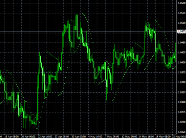 Of course, entering a position correctly is good, but how to exit correctly so as not to do it in advance or, as they say, when it’s too late (a new reversal takes all the profit) is one of the most difficult tasks that every trader faces.
Of course, entering a position correctly is good, but how to exit correctly so as not to do it in advance or, as they say, when it’s too late (a new reversal takes all the profit) is one of the most difficult tasks that every trader faces.
Wells Wilder also faced such a task at one time, the result of which was his new Parabolic SAR indicator. The indicator appeared before the general gaze of traders in 1976 in the author’s new book entitled “New Conceptual Concepts in the Field of Technical Trading Systems.”
At that time, this book simply became a boom in the field of trading, so most beginners begin their journey with it.
If you translate the abbreviation SAR literally, you can understand the whole essence of the indicator, since its translation is: “Stop and Reversal.”
The popularity of this indicator is so great that all trading platform developers, without exception, enable it by default. So, to add an indicator to a chart with a price in the Meta Trader 4 platform, enter the navigator panel, open the list of indicators and the trend subsection. Next, simply drag the indicator onto the price chart. If you did everything correctly, your schedule should change something like this:
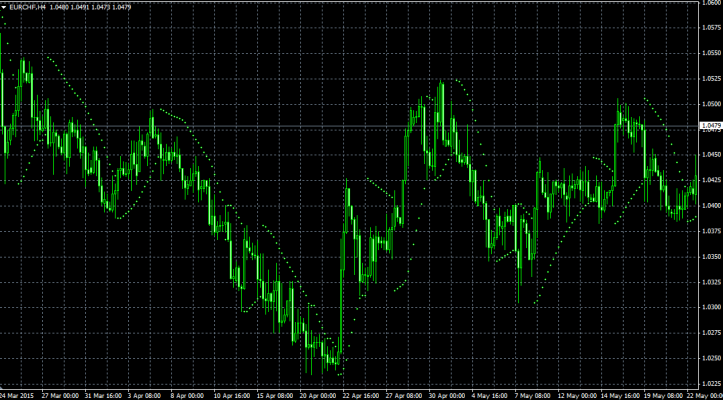
As you may have noticed, the instrument is displayed as dots above and below the price. The formula for calculating the indicator is very complex, so I will not focus on it, but I can say that in addition to price, the indicator also takes into account time. If you look closely at the chart, you will notice that points in different areas are located at different distances from the price. It is these distances that are the result of introducing the time parameter into the formula for calculating the time parameter, so the indicator is able to show us a kind of aging trend.
If the trend is young and recently emerged, then the points will be located at a great distance, and as the trend ages, they will move closer and closer to the price.
Features of using Parabolic SAR
Traders very rarely use this indicator to enter a position. But among them there is a category of scalpers who are without it. For example, you can enter a buy position if a dot appears below the price, or enter a sell position when a dot appears above the price. However, this is a very rare way to use the indicator, and if it is used, they try to enter when the second point appears, so as not to consider this a small market impulse. An example of an entry can be seen in the picture below:
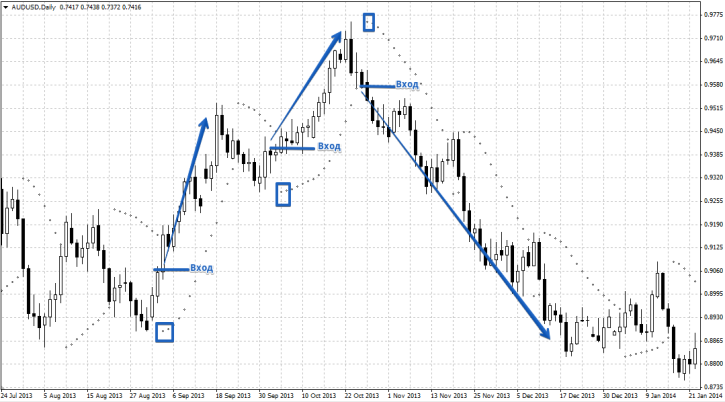
Despite the fact that some traders use this indicator to enter a position, its main purpose is to help exit a position and set a stop order. Let's say you entered the market, it doesn't matter where you buy or sell, where do you put your stop? Many will start singing a song about support and resistance, but what if it is far away? The Parabolic indicator will help you with this. A stop order for it is set at the level of the point that it draws, and then this stop is moved point by point in the direction of the price. An example is shown in the picture below:
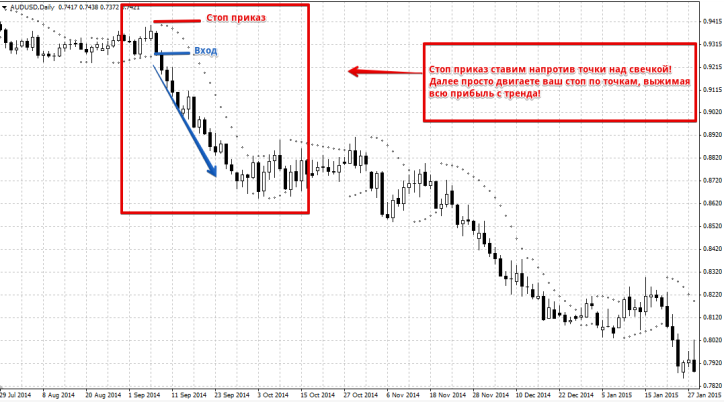
If you are faced with the question of exiting the market, the Parabolic SAR indicator point will also help you. If you are standing in the market and a point appears in the opposite direction, this is a good moment to exit the position. You can see an example below:
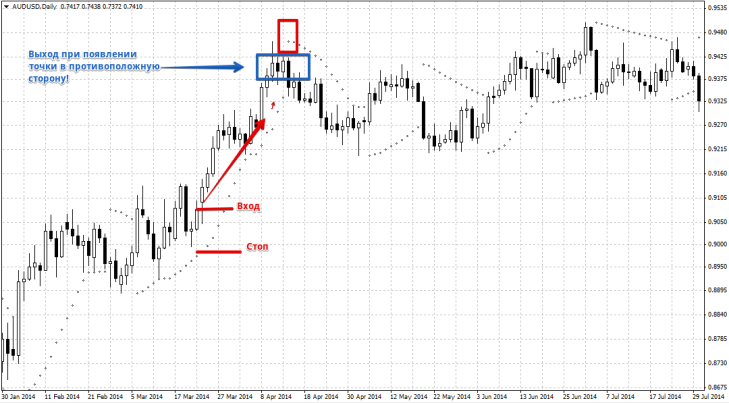
The Parabolic SAR indicator is actively used as a trend filter. For example, they only buy if the indicator point is below the price or only sell if the indicator point is below the price. In general, this is a very useful tool that is underestimated by many traders, but in vain, because it can help solve many of your questions! In combination with it, it is good to use such a tool as the Trend Direction Indicator
